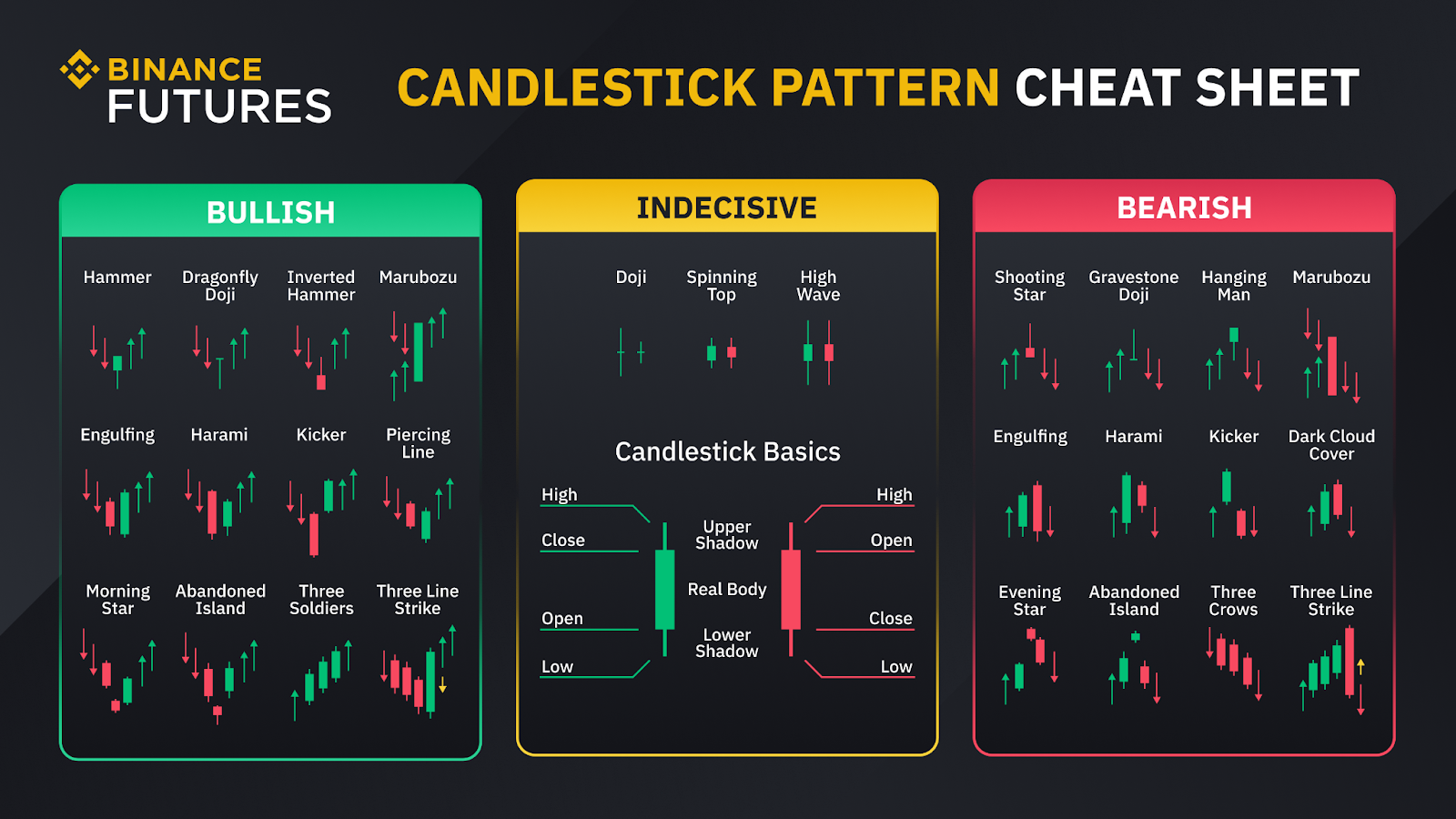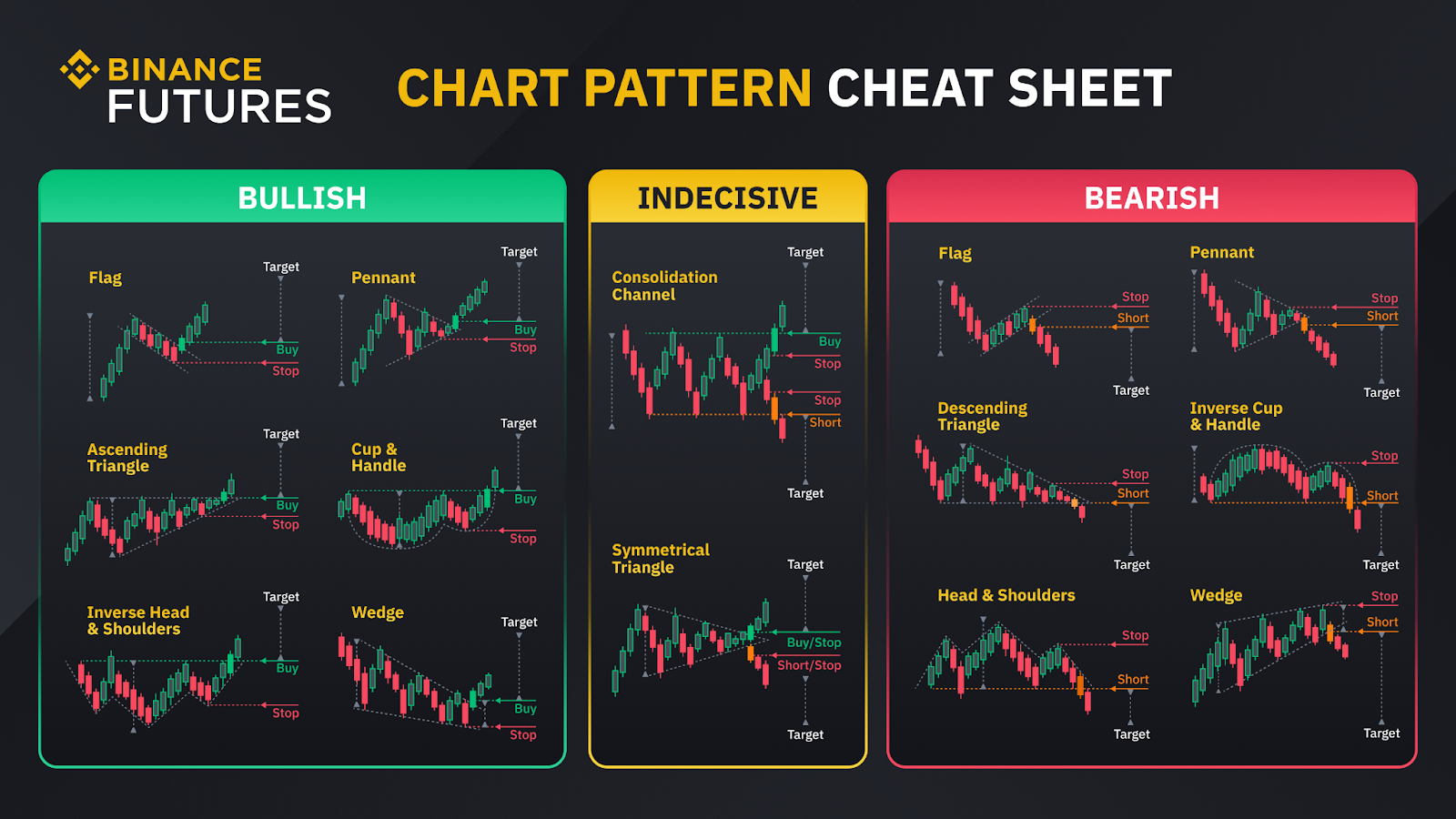Four-Step Checklist Before Entering Any Crypto Trade
Main Takeaways
Although cryptocurrencies offer opportunities due to their volatility, different trading setups offer different probabilities of success.
A step-by-step checklist can help traders enter positions that align with their strategy to avoid making emotional decisions.
The goal is to enter trades that offer better probabilities through high reward-to-risk ratios, even if not all trades result in a win.
Users can access a range of trading tools on Binance Futures. These tools and indicators can help streamline the trading process for smarter planning.
Given the limitless trading possibilities that cryptocurrencies offer, it’s imperative to “plan your trades, and trade your plan.” This approach helps keep traders disciplined, knowledgeable, and thorough with their trading strategies.
The goal is to minimize risk by identifying when to enter and exit a trade and when to abandon a losing trade.
Plan Your Trade, Trade Your Plan
One of the reasons why too many traders worldwide fail to understand that trading is a high-level profession is because of the low entry barriers. But to succeed at it, one should study the ins and outs of trading on platforms like Binance Academy and put in countless hours of practice.
Just like a doctor needs four years of undergraduate study, four years of medical school, and an additional three to ten years of surgical residency and fellowship at a hospital to become a surgeon, a trader needs a lot of preparation to become successful.
Anyone serious about trading should put a lot of emphasis on risk management, which begins with a proper trading plan. The idea is for traders to clearly understand their entry point, position size, and where they’ll place their take-profit and stop-loss orders before they even enter a trade. Essentially, a trading plan will help identify setups that offer a good reward-risk ratio and align well with a trader’s strategy.
The following four-step checklist is an example of how traders can determine whether the setups they’ve identified offer good profit potential for the risk they’re willing to take.
Step 1: Identify Trade Setup
Traders should understand the conditions needed for a favorable outcome before entering a trade based on their trading preferences.
Some traders may prefer to use candlestick patterns, chart patterns, trendlines, or technical indicators. Some traders may choose to study a technical analysis of trends in the market to determine their trade setup.
For instance, a trader who relies on candlestick patterns to anticipate price direction and momentum might wait for an inverted hammer candlestick to form a downtrend on the daily chart to predict a bullish reversal.
By analyzing patterns, traders can identify a trade setup that aligns with their strategy before opening any long or short positions.
Step 2: Assess Trade Triggers
After identifying a proper trade setup, traders need a trigger indicating the right time to open a long or short position on a given cryptocurrency.
Some traders prefer to enter a trade upon the break of resistance, while others like to wait for a pullback into support. These events can be considered triggers that separate high-probability trading opportunities from the usual price fluctuations in the cryptocurrency market.
For instance, cryptocurrencies tend to retrace to an ascending triangle’s X-axis each time they break out of this bullish chart pattern. A trader who understands such price behavior may attempt to wait for that potential pullback to enter a long position.
By assessing the triggers, traders can know where their entry point will be, regardless of the volatility in the cryptocurrency markets. It’ll also give traders enough time to determine the size of their position and set up take-profit and stop-loss orders before they even enter a trade.
Step 3: Determine Position Size
Regardless of your portfolio’s size, you still need to exercise proper risk management to avoid considerable losses.
Most traders clearly understand their account size, which helps them determine how much capital can be allocated to a particular trade. Likewise, traders should decide what percentage of available capital they’re willing to risk on a single trade.
A well-known trading strategy, the 2% rule, suggests that traders should not risk over 2% of their accounts when trading. Still, it is advisable to adopt a 1% rule instead, as it is generally safer due to the high volatility of the cryptocurrency market. This rule dictates that traders shouldn’t risk more than 1% of their available capital when trading. If the thesis is wrong and their stop-loss is hit, they’ll only lose 1% of their trading account.
For instance, a trader with 5,000 USDT as trading capital and risks only 1% can’t lose more than 50 USDT on a single trade. But let’s say the invalidation point for the identified trade setup is 5% from the initial entry. To calculate the position size, one must multiply the account size by the account risk and divide the result by the invalidation point.
position size = account size x account risk / invalidation point
position size = 5,000 x 0.01 / 0.05
1,000 = 5,000 x 0.01 / 0.05
The position size for this particular trade will be 1,000 USDT. But if the invalidation point were 10% from the initial entry, the position size would be 500 USDT.
Be aware that losses are expected and are highly likely when it comes to trading. Even professional traders aren’t always right – but having a proper risk management strategy may increase the chances that winning trades are more significant than losing trades.
Step 4: Set Up TP/SL
Every trade requires an exit point, so setting up take-profit and stop-loss orders is one of the most important ways to mitigate risks and keep emotions in check.
Take-profit orders are usually placed in conjunction with stop-loss orders, so traders don’t have to worry about executing a trade or second-guessing their decisions. Binance Futures lets users place take-profit and stop-loss orders simultaneously to help traders insulate their decision-making from emotional influences.
For instance, if a cryptocurrency moves toward a trader’s target, the take-profit order will be executed to close the position for the anticipated gains. On the other hand, if a cryptocurrency moves against the thesis, the stop-loss order will be executed to close the position for the anticipated losses.
With a well-defined risk-to-reward ratio, traders are able to know what to expect from each trade setup they have identified, even before entering any positions.
Time to Practice!
Now that you have understood the basics of developing a comprehensive trading plan, it’s time to put your trading skills to the test.
You can access Binance Futures’ Mock Trading to implement your trading plan in real time with zero risks. This testnet environment is a simulation trading platform to practice multiple strategies in live cryptocurrency markets without risking capital.
You can switch back to live trading on Binance Futures once you are ready to trade the real markets.
Further Reading
(Blog) Crypto Futures Trading: Things You Need to Know Before You Begin
(Blog) Crypto Futures Risk and Money Management: 5 Things You Can Do to Better Manage Trading Risk
Disclaimer: Binance Futures products are restricted to certain countries and users. This content is not intended for users/countries to which restrictions apply. See our terms of use and risk warning.
Risk Warning: Digital asset prices can be volatile. The value of your investment can go down or up, and you may not get back the amount invested. You are solely responsible for your investment decisions, and Binance is not liable for any losses you may incur. Futures trading, in particular, is subject to high market risk and price volatility. All of your margin balance may be liquidated in the event of adverse price movement. Past performance is not a reliable predictor of future performance. Before trading, you should make an independent assessment of the appropriateness of the transaction in light of your own objectives and circumstances, including the risks and potential benefits. Consult your own advisers where appropriate. This information should not be construed as financial or investment advice. To learn more about how to protect yourself, visit our Responsible Trading page. For more information, see our Terms of Use and Risk Warning.



